The Enigmatic Gemstone: Opal’s Playful Dance with Light
Sharon Bohannon
September 20, 2019
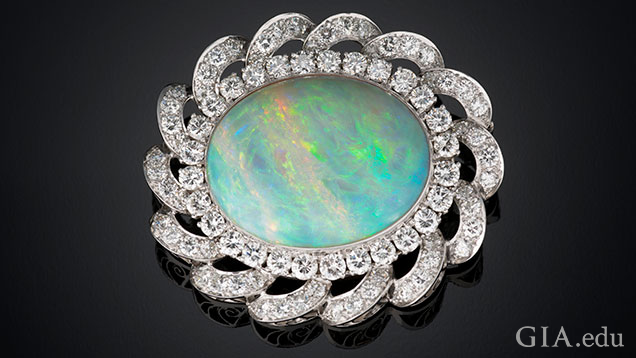
This stunning Australian white opal and diamond brooch converts to a pendant. Courtesy of Rodriguez and Sons. Photo by Robert Weldon/GIA
"The romance of precious opal begins when you catch the first glimpse of its movement with dancing light. Opal’s play-of-color can be compared to a lyrical dance, sometimes expressing itself as a grand jeté of bold, broad flashes of color, other times as smaller, quicksteps of pinpoint flashes.
Often mysterious, opal’s shimmering color can present as a flowing, continuous movement.
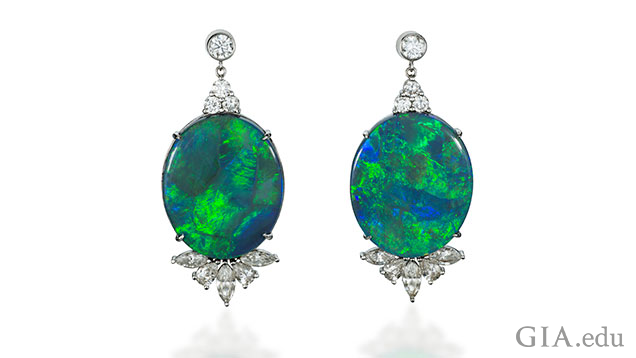
Green and blue play-of-color flit playfully in this pair of black Australian opal earrings. Courtesy of Rodriguez and Sons. Photo by Robert Weldon/GIA
Opal’s intriguing flashes of spectral colors
Scientists believe most opal deposits formed 15 to 30 million years ago in desert areas rich in silica. Strong seasonal rains drenched the earth and soaked deep into rock, carrying dissolved silica, a compound of silicon and oxygen, with it. When much of the water evaporated during dry periods, deposits of silica solidified and formed in cracks between the layers of underground sedimentary rock, producing opal.
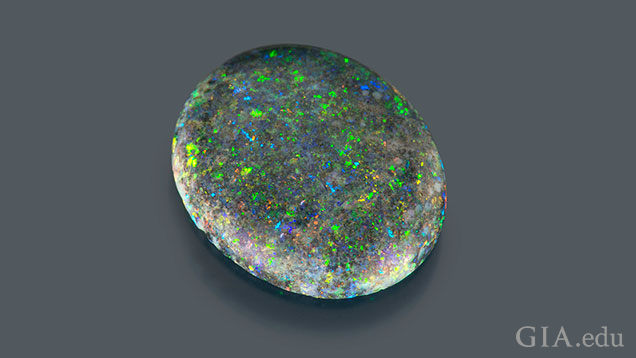
Notice the small flecks of green, blue and orange play-of-color in a pinfire pattern in this opal from Andamooka, South Australia. Courtesy of the Dr. Edward Gübelin Collection. Photo by Orasa Weldon/GIA
The shifting spectral color of precious opal is a result of light that reflects off its closely packed silica spheres. The arrangement and size of the spheres result in the varying patterns and colors of the opal’s play-of-color, including:
* Pinfire or pinpoint: small, closely set patches of color
* Harlequin or mosaic: broad, angular, closely set patches of color resembling a checkerboard
* Flame: sweeping reddish bands or streaks that shoot across the gemstone
* Peacock: mainly blue and green flashes of color
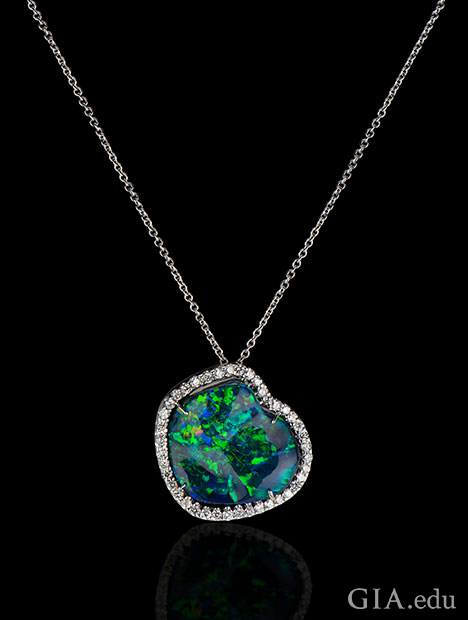
This elegant black opal pendant necklace shimmers with intense blue and green play-of-color. Courtesy of Lightning Ridge Collection by John Ford. Photo by Emily Lane/GIA
In addition to the size, shape and arrangement of its silica spheres, opal’s underlying body color contributes to its overall appearance:
* Black opal – a dark body color that generally exhibits bold colors of blue, green, red and orange.
* White opal – a white to medium gray body color exhibits the blue, green, red and orange hues in a softer tone.
* Fire, water and jelly or crystal opals – develop under different conditions and are transparent. They form in red, orange, yellow and brown hues. If they have play-of-color that increases their desirability.
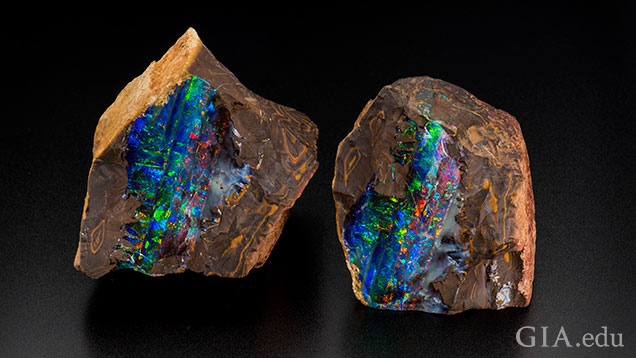
The matrix in boulder opal often adds a beauty of its own. Courtesy of True Blue Opals & Gems. Photo by Robert Weldon/GIA
Boulder opal ... "
https://www.gia.edu/gia-news-research/e ... ance-light